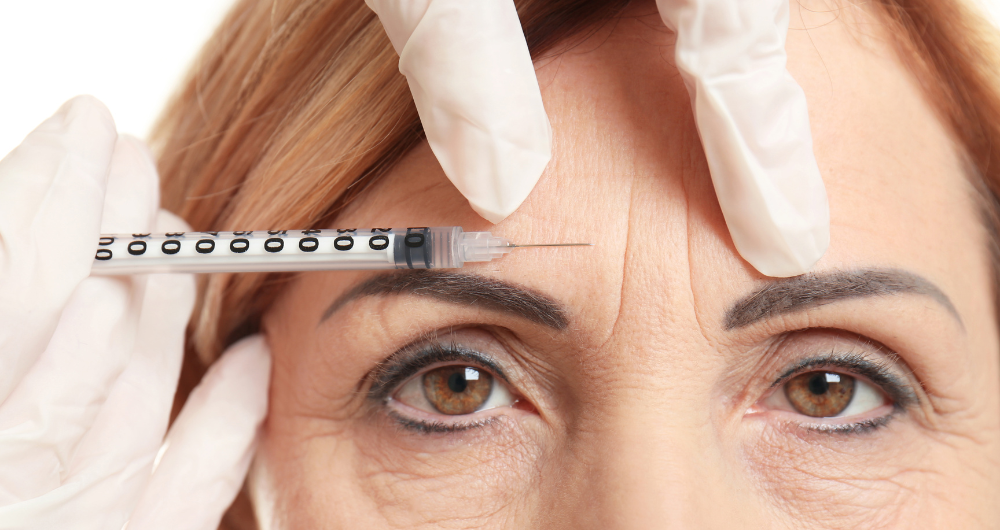
Migraines are severe, debilitating episodes that can significantly impair one’s quality of life. In recent years, Botox for migraines has emerged as a promising treatment option for those suffering from chronic migraines. However, before you consider Botox for migraines in Babylon, NY, it’s essential to arm yourself with all the necessary information.
Table of Contents
Introduction
Key Takeaways
- How Botox Works for Migraines
- Eligibility for Botox Treatment
- Botox Treatment Process for Migraines
- Expected Outcomes and Efficacy
- Potential Side Effects and Risks of Botox for Migraines
- Cost of Botox for Migraines
- Long-Term Management and Follow-Up Care
Frequently Asked Questions (FAQs)
| Key Takeaways ✔ Botox prevents migraines by blocking pain signal neurotransmitters. ✔ Eligible candidates often have chronic migraines unrelieved by other treatments. ✔ Botox for migraine involves quarterly small injections around the head and neck to reduce symptoms. ✔ Patients typically see reduced migraine frequency and severity after 2-3 cycles. ✔ Common side effects include minor injection site reactions; serious complications are rare. ✔ Costs vary; many insurance plans offer coverage for eligible patients. ✔ Effective management requires continuous treatment and lifestyle management. |
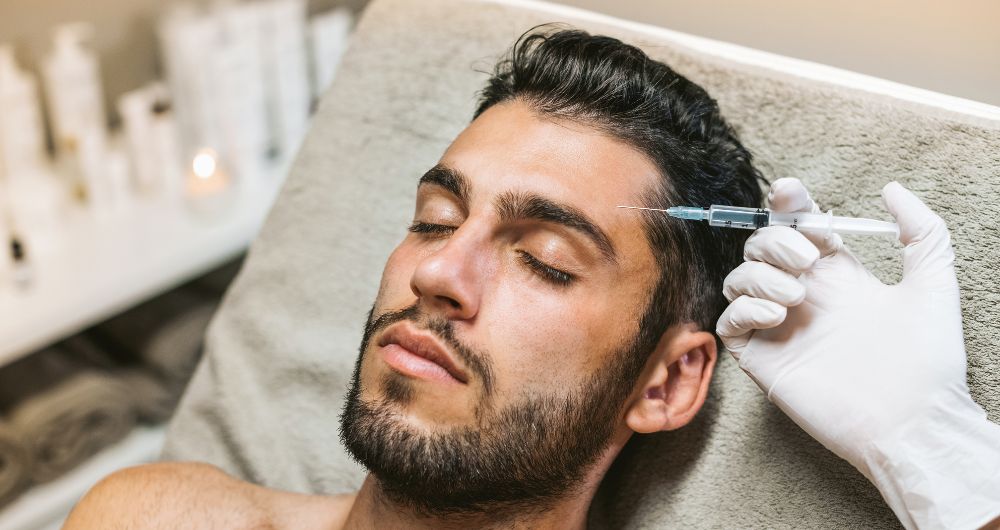
1. How Botox Works for Migraines
Botulinum toxin, known commercially as Botox, is a neurotoxin produced by the bacterium Clostridium botulinum. Botox has various therapeutic applications in small, controlled doses, including treating conditions involving muscle stiffness and involuntary muscle contractions.
Mechanism of Action
By blocking pain signals and preventing muscle contractions that contribute to migraine pain, Botox offers a preventive approach that has improved the quality of life for many migraine sufferers.
- Neurotransmitter Blockade: Botox for migraines works by blocking the release of neurotransmitters responsible for transmitting pain signals from the brain to the nerve endings around the head and neck.
- Muscle Relaxation: By causing temporary paralysis in the muscles where it’s injected, Botox can prevent the tension and muscle contractions that may contribute to migraine pain.
- Pain Pathway Interruption: Botox interferes with the pain pathways, which may reduce the severity and frequency of migraine attacks.
- Preventive Treatment: Unlike other treatments that are taken to relieve migraine symptoms once they’ve started, Botox for migraines is used preventively to reduce the occurrence of migraines.
- Long-term Efficacy: Patients often see sustained relief after two to three rounds of treatment, with improvements in symptoms lasting up to three months after each session of injections.
2. Eligibility for Botox Treatment
Botox for migraines is specifically approved for patients who suffer from chronic migraines. Chronic migraines are defined as having more than 15 headache days per month, with at least 8 of those days meeting the criteria for migraines. This treatment is particularly beneficial for those who have not found relief with other migraine medications or treatments.
Key Points to Consider
When considering Botox for migraines, understanding eligibility is crucial. Not every migraine sufferer will be a suitable candidate for this treatment.
- Chronic Migraine Diagnosis: The primary criterion for Botox for migraines is a formal diagnosis of chronic migraines from a qualified healthcare provider.
- History of Treatment Failure: Individuals who have tried and not responded to traditional migraine treatments, including oral medications, may find Botox for migraines to be a viable option.
- Severity and Frequency of Migraines: Those with severe and frequent migraine attacks stand to benefit significantly from Botox for migraines.
- Age and General Health: Generally, candidates are adults in good health, although specific age and health conditions may influence eligibility.
- Comprehensive Evaluation: A thorough assessment by a healthcare provider is necessary to ensure that Botox for migraines is appropriate for the patient’s condition and medical history.
Criteria for Eligibility
Determining eligibility for Botox for migraines involves a detailed evaluation process. This ensures that the treatment is suitable and safe for the patient.
- Detailed Medical History: A comprehensive medical history helps identify potential contraindications or factors that might affect the treatment’s effectiveness or safety.
- Previous Migraine Treatments: A record of past migraine treatments, including medications and other therapies, is critical for determining eligibility for Botox for migraines.
- Frequency and Duration of Migraines: Patients must typically have a history of chronic migraines, as defined by the frequency and duration criteria mentioned above.
- Overall Health Assessment: This is carefully evaluated and includes underlying conditions or medications that could interact with Botox.
- Expectations and Goals: Discussing the patient’s expectations and treatment goals with a healthcare provider, such as the specialists at Shore Medical Aesthetics & Anti-Aging, can help determine whether Botox for migraines is suitable.
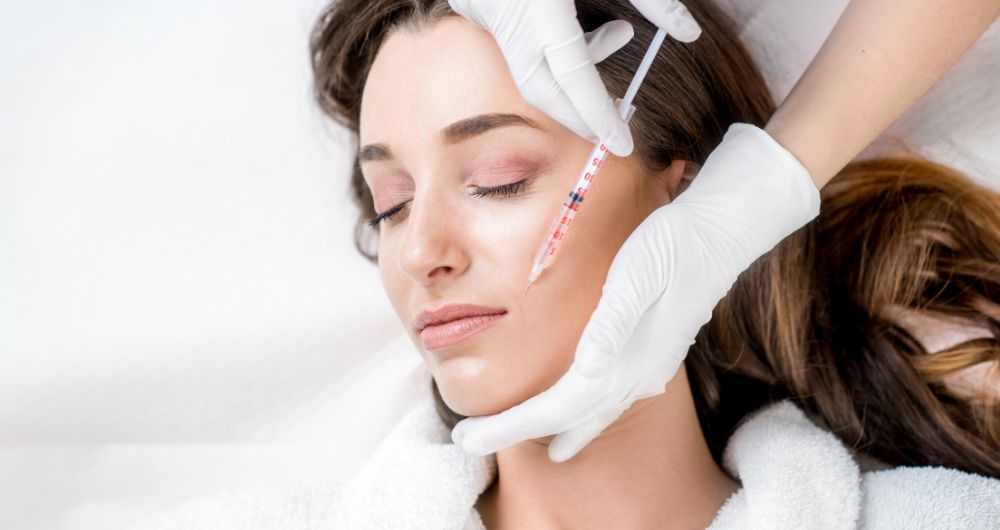
3. Botox Treatment Process for Migraines
The journey toward relief from chronic migraines through Botox for migraines involves a series of steps designed to ensure the treatment’s effectiveness and the patient’s comfort and safety.
Preparing for Botox Treatment
Before embarking on Botox for migraines, patients undergo a preparatory phase that sets the stage for a successful treatment. This phase is crucial for ensuring that Botox for migraines is not only the right choice but also administered under the best possible conditions.
- Initial Consultation: The first step is a detailed consultation with a healthcare provider specializing in Botox for migraines, such as those at Shore Medical Aesthetics & Anti-Aging. During this meeting, the provider will review the patient’s medical history, discuss previous migraine treatments, and determine if Botox is suitable.
- Treatment Planning: Once a candidate is deemed suitable, the provider will outline a personalized treatment plan. This plan includes the specific injection sites, the dosage of Botox to be used, and the expected frequency of treatment sessions.
- Informed Consent: Patients are provided with all the necessary information about the benefits, risks, and potential side effects of Botox for migraines. Informed consent ensures the patient fully understands and agrees to proceed with the treatment.
- Pre-Treatment Instructions: Patients may be given specific instructions to follow in the days leading up to their Botox treatment for migraines. These instructions can include avoiding certain medications that might increase bleeding or bruising at the injection sites.
- Scheduling: The final step in the preparatory phase is scheduling the Botox for migraine treatment session. Timing is crucial, especially for patients traveling from afar or coordinating care with other healthcare providers.
During the Treatment Session
The treatment session for Botox for migraines is a meticulous procedure designed to maximize comfort and effectiveness. Patients will find that the treatment is relatively quick and involves minimal discomfort.
- Cleanse and Mark: The head, neck, and sometimes shoulder treatment areas are cleansed. The healthcare provider may mark the specific injection sites with a non-toxic marker to guide the treatment.
- Injection Process: A small needle is used to inject Botox into the predetermined sites for migraines. The number of injections varies but typically ranges from 31 to 39, distributed across seven specific areas of the head and neck.
- Minimal Discomfort: Most patients report minimal discomfort during injection, often described as a series of quick, small pinches. The entire session usually takes about 20 minutes.
- Immediate Aftercare: After the injections, the provider may apply gentle pressure to the injection sites to minimize swelling or bleeding. Patients are usually able to resume their normal activities immediately after the session.
- Monitoring and Feedback: Patients are monitored for any adverse reactions immediately following the treatment. The provider may offer additional aftercare instructions and encourage patients to provide feedback on their experience and any immediate side effects.
4. Expected Outcomes and Efficacy
The decision to pursue Botox for migraines is often fueled by the hope for a significant reduction in the frequency and severity of migraine episodes. Understanding the expected outcomes and the efficacy of Botox for migraines can help set realistic expectations for patients considering this treatment.
What to Expect After Botox Treatment
Here’s what patients might anticipate post-treatment:
- Initial Response Time: Patients may not experience immediate relief after their first Botox treatment for migraines. It typically takes 2 to 4 weeks to begin noticing a reduction in the frequency and severity of migraines.
- Variability in Response: Botox’s efficacy for migraines can vary among individuals. While some may see a substantial decrease in migraine days, others might notice a more modest improvement.
- Duration of Effectiveness: The effects of Botox for migraines are temporary, usually lasting between 10 to 12 weeks. Patients will require ongoing treatments every 12 weeks to maintain the benefits.
- Improvement in Symptoms: In addition to reducing migraine frequency, patients often report improvements in the severity and duration of migraine episodes, leading to a better quality of life.
- Reduction in Medication Use: Many patients find that they rely less on their acute migraine medications after receiving Botox for migraines, further enhancing their overall well-being.
5. Potential Side Effects and Risks of Botox for Migraines
While Botox for migraines presents a beacon of hope for many suffering from chronic migraines, patients need to be fully aware of the potential side effects and risks associated with this treatment.
Common Side Effects
Understanding these can help make an informed decision and prepare for possible outcomes.
- Injection Site Reactions: The most common side effects are localized to the injection sites and can include pain, swelling, bruising, and redness. These symptoms are typically mild and resolve independently within a few days.
- Headaches: Ironically, some patients may experience temporary headaches following Botox for migraine treatment. However, these are usually short-lived and can be managed with over-the-counter pain relievers.
- Neck Pain and Stiffness: Given the areas treated with Botox for migraines, some patients report neck pain and stiffness post-treatment. These symptoms are generally mild and diminish within a week.
- Fatigue: Some patients experience a temporary feeling of tiredness or fatigue after receiving Botox for migraines, which can affect their daily activities.
- Eyelid Drooping: In rare cases, the muscles around the eyes may be affected, leading to temporary eyelid drooping. This side effect usually resolves as the Botox wears off.
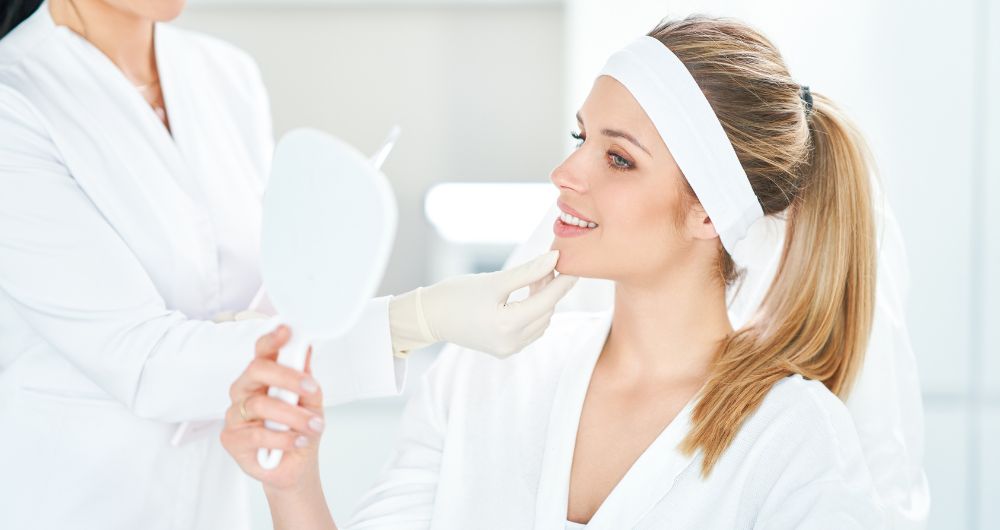
6. Cost of Botox for Migraines
Navigating the financial aspects of Botox for migraine treatment is crucial for patients considering this path for their chronic migraine management. Understanding the cost implications and insurance coverage options can significantly impact decision-making and ensure patients are financially prepared for their treatment journey.
Factors Influencing the Cost
Here’s an in-depth look at the factors that influence the costs associated with Botox for migraine:
- Number of Injections Required: The cost of Botox for migraines can vary depending on the number of Botox units required, which is determined by the severity and frequency of the migraines.
- Provider’s Fee: The expertise and location of the healthcare provider administering Botox for migraines can influence the overall cost. Specialists, such as those at Shore Medical Aesthetics & Anti-Aging, may have different pricing structures based on their experience and the comprehensive care they provide.
- Geographic Location: The cost of Botox for migraine treatment can vary significantly from one region to another, with metropolitan areas often having higher prices due to increased demand and higher operational costs.
- Facility Fees: Some treatments are conducted in facilities that charge additional fees, which can affect the total cost of Botox for migraines.
- Frequency of Treatments: Since Botox for migraines requires ongoing treatments every 12 weeks for optimal results, the cumulative cost over time is an essential consideration for patients.
Insurance Coverage for Botox for Migraines
Understanding insurance companies’ policies, criteria, and processes is crucial for patients seeking coverage for this effective but often expensive treatment option.
- Coverage Criteria: Many insurance companies cover Botox for migraines, but they often have specific criteria that must be met, such as a documented history of chronic migraines and failure of other preventive treatments.
- Pre-authorization Requirements: Before starting treatment, you may need to obtain pre-authorization from your insurance company, demonstrating that Botox for migraines is medically necessary.
- Deductibles and Copayments: Understanding your plan’s deductible and any copayments or coinsurance required for Botox for migraines is essential for estimating out-of-pocket costs.
- Appealing Denials: If coverage for Botox for migraines is initially denied, patients have the right to appeal the decision. Gathering comprehensive medical documentation and support from your healthcare provider can aid this process.
- Annual Limits and Renewals: Some insurance plans may have annual limits on how much they will pay for Botox for migraine treatment, so it’s essential to be aware of these caps and the renewal process for continued coverage.
7. Long-Term Management and Follow-Up Care
Effective long-term management and diligent follow-up care are paramount for patients undergoing Botox for migraine treatments. Chronic migraines are a persistent condition that necessitates an ongoing approach to care, emphasizing the importance of regular monitoring, adjustments to treatment plans, and lifestyle modifications.
Sustaining the Benefits of Botox for Migraines
Here are essential elements of sustained management and follow-up strategies for those receiving Botox for migraines, ensuring the best possible outcomes over time.
- Adherence to Schedule: Maintaining a consistent treatment schedule, typically every 12 weeks, is crucial to sustain the benefits of Botox for migraines. Irregular sessions can lead to a resurgence of symptoms.
- Assessment of Efficacy: Regular appointments allow healthcare providers to assess Botox’s ongoing effectiveness for migraines and make necessary dosage adjustments.
- Monitoring for Side Effects: Long-term monitoring helps identify any delayed side effects or adjustments needed in response to the patient’s tolerance to Botox for migraines.
- Refinement of Injection Sites: Healthcare providers may fine-tune the injection sites over time based on the patient’s feedback and evolving migraine patterns.
- Holistic Approach: Continual treatment sessions provide an opportunity to integrate Botox for migraines with other migraine management strategies, including medication, lifestyle changes, and alternative therapies.
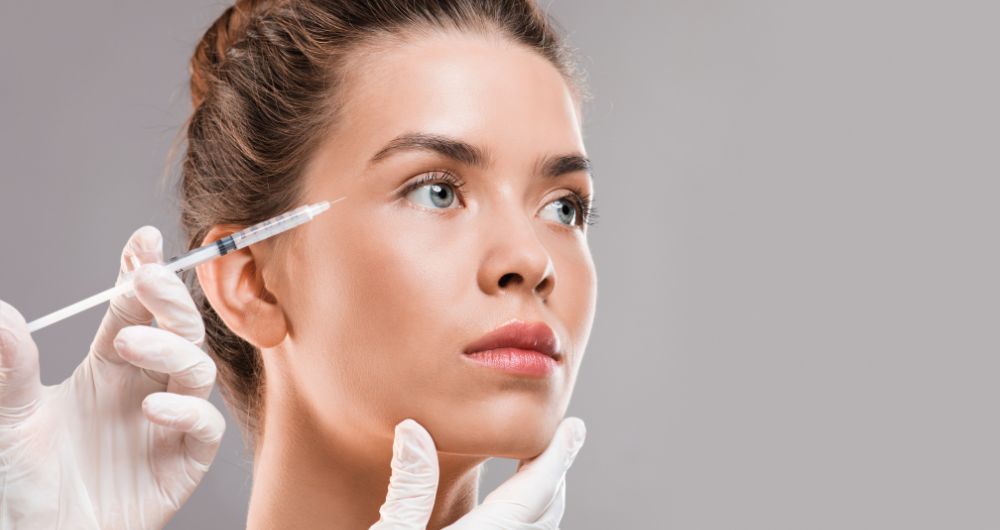
Frequently Asked Questions (FAQs)
Can Botox for migraines be used in conjunction with other migraine treatments?
Yes, Botox for migraines can often be used alongside other migraine treatments. It’s typically part of a comprehensive migraine management plan that may include oral medications, lifestyle changes, and other therapies. Coordination between healthcare providers ensures that all treatments are compatible and tailored to the patient’s needs.
How quickly can I return to work or daily activities after receiving Botox for migraines?
Most patients can return to their work or daily activities immediately after receiving Botox for migraine treatment. The procedure requires no downtime, and any minor side effects, such as redness or swelling at the injection sites, are usually short-lived and do not hinder most activities.
Will my health insurance cover the total cost of Botox for migraines?
Health insurance coverage for Botox for migraines varies by provider and plan. While many insurance companies cover the treatment, there may be specific criteria for coverage. It’s essential to consult your insurance provider to understand your coverage details, including any deductibles or copayments.
Is there an age limit for receiving Botox for migraines?
Botox for migraines is approved for adults 18 years and older who meet the criteria for chronic migraines. There isn’t a specific upper age limit. Still, older patients should undergo a thorough evaluation to assess their suitability for the treatment, considering any other health conditions they might have.
How do I know if Botox for migraines is working for me?
Monitoring the frequency, duration, and severity of migraine episodes before and after treatment can evaluate Botox’s effectiveness for migraines. Many patients notice a significant improvement after two to three treatment cycles. Continuous communication with your healthcare provider is critical to assessing the treatment’s success and making necessary adjustments.
Unlock a Migraine-Free Life with Shore Medical Aesthetics & Anti-Aging
If you’re exploring Botox for migraines as a potential solution to managing your chronic migraines, choosing the right healthcare provider is crucial to your treatment’s success, like Shore Medical Aesthetics & Anti-Aging. Our team of experienced professionals in Babylon, NY, is dedicated to providing personalized care tailoring treatments to meet your unique needs. Contact us to schedule your consultation and take the first step towards a brighter, migraine-free future.





